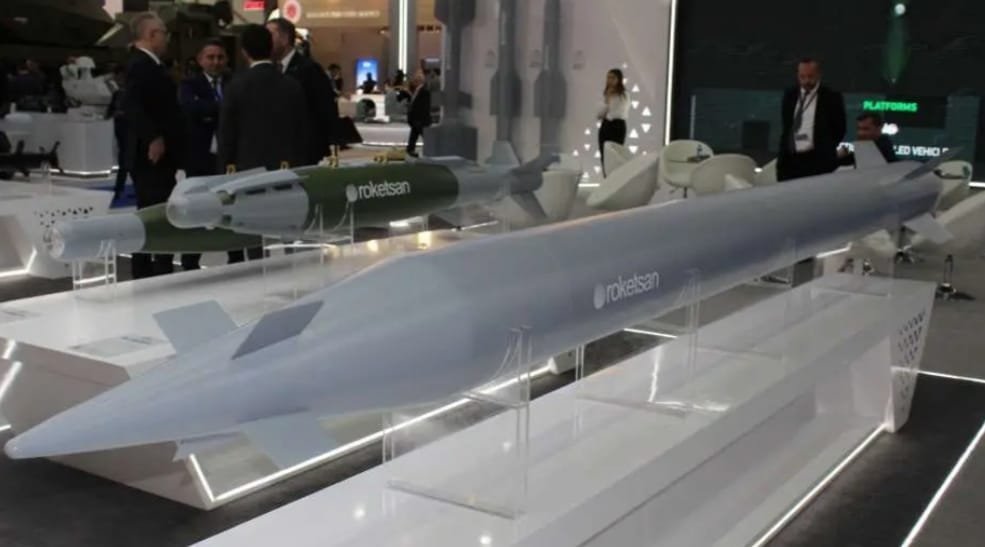
WDS 2024: Roketsan demonstrates its TRG-300 guided missile
At the World Defense Show (WDS 2024) held in Saudi Arabia from February 4th to 8th, 2024, Roketsan is showcasing its TRG-300 guided missile, emphasizing its capability to deliver precise and effective firepower against high-priority targets. The missile covers distances ranging from 20 to 120 km, demonstrating Roketsan’s commitment to advancing missile technology for enhanced strategic impact.
The TRG-300 missile, engineered by Turkey’s ROKETSAN, is designed for precision strikes under various conditions, emphasizing accuracy and reduced collateral damage. He offers all-weather, all-terrain precision strike capabilities, characterized by rapid deployment, high accuracy, and minimal collateral damage. It features advanced anti-jamming and anti-spoofing technology, targeting a wide range of high-value assets with pinpoint accuracy.
Block-II and Block-III variants have distinct specifications, including a 300 mm diameter, ranges of 20-90 km and 30-120 km respectively, and advanced guidance systems combining GPS and GLONASS with inertial navigation. They utilize composite solid propellants, with warheads designed for extensive damage radius and high effectiveness, ensuring less than 10 meters of accuracy. TRG-300 Guided Missile can be launched from ROKETSAN Multi Barrel Rocket Launcher [MBRL] Weapon System and other platforms with compatible interfaces.
The integration of TRG-300 missiles with ROKETSAN’s Multi Barrel Rocket Launcher system and other compatible platforms underscores the missile’s versatility and readiness for deployment, highlighting ROKETSAN’s commitment to advancing defense capabilities through technological excellence and strategic innovation.
The launcher, mounted on a 6×6 Tactical Wheeled Vehicle, supports fire missions in any condition, offering mobility and durability. Its long-range and rapid-fire capabilities make it a key asset for diverse military operations, including peace support and tactical missions. Equipped with advanced navigation and stabilization systems, it requires a minimal crew of three for operation, enhancing efficiency and responsiveness in the field.


